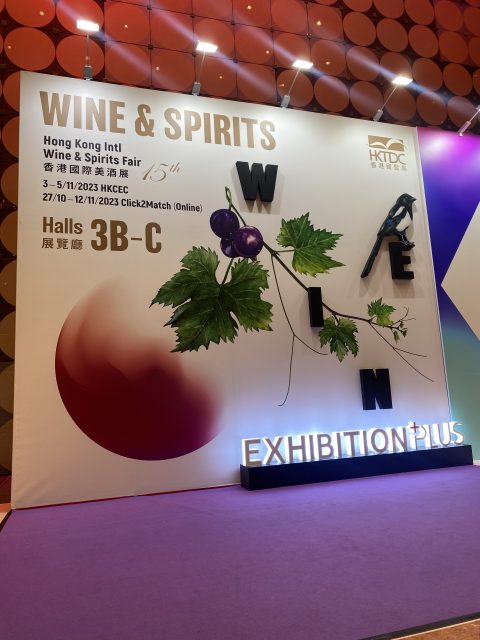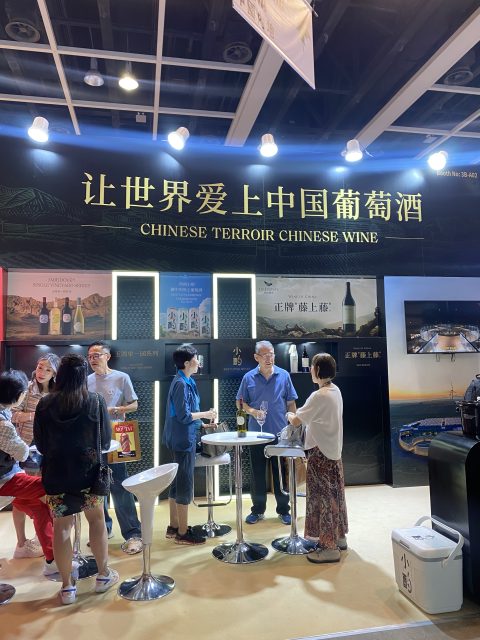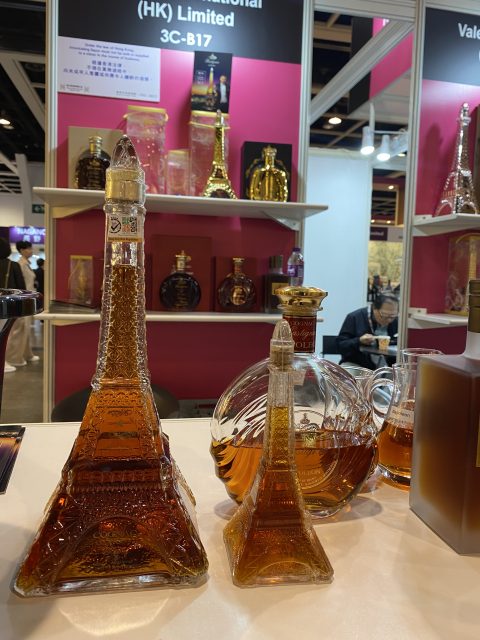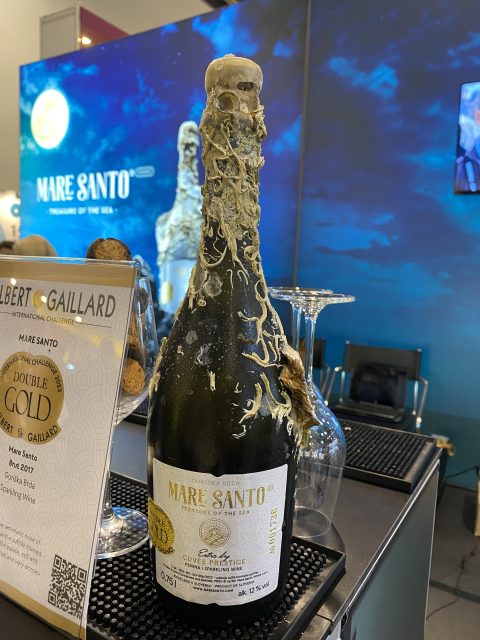This website uses cookies so that we can provide you with the best user experience possible. Cookie information is stored in your browser and performs functions such as recognising you when you return to our website and helping our team to understand which sections of the website you find most interesting and useful.
Top 5 trends from the Hong Kong Wine & Spirits Fair
Back for the first time following the pandemic, Hong Kong Trade Development Council held its annual Wine & Spirits Fair over the weekend. Here are some of the top trends from across the show.

1. Chinese wine
Wine from Mainland China took centre stage at this year’s event, with 26 Chinese exhibitors present at the show.
The phrase ‘Guo chao’, which loosely translates to ‘Chinese trend’ in English, could be seen on signs throughout the show. It relates to a growing appetite for domestic-made products, and has been embraced by wine producers in the world’s most populous country.
Elsa Zhang, a Chinese government employee representing the Helan Mountain’s East Foothill wine region, said that “in China, we’re buying Chinese cars, and we’re buying Chinese phones”. Wine is the next step in this journey as consumers begin “appreciating made in China products”.
Cabernet Sauvignon, Merlot and Cabernet Franc are some of the most widely planted grape varieties in the region.
However, across the regions represented at the fair, Marselan was one of the most widely produced. Zhang said the grape was “very suitable” for the Chinese climate, and said that the industry was “hoping Marselan can be the future” of wine in China.
She even dubbed it “China’s Malbec”, in reference to Argentina’s flagship grape.

Growth strategies vary from producer to producer, but many are targeting a younger crowd of drinkers, who are more adventurous. Ningxia Xige Estate.
Established in 2017, Ningxia Xige Estate has over 1,300ha under vine, and alongside its high-end portfolio, the producer is also offering Chinese wine in cans for younger drinkers.
2. Bolder is better

From diamanté-encrusted wine bottles to Eiffel Tower-shaped whisky decanters, eye-catching packaging was all the rage at this year’s fair.
Shainal Jivan, who runs importer and distributor Tai-Pan Beer Co. in Hong Kong, said that particularly in the Asian market, you “need something which catches the eye”.
His business distributes the Behemoth beer brand across the local on- and off-trade, a brand whose labels exhibit the bright colours and caricature-centric labels which are popular among consumers.
3. Constant change
The Asian market is “constantly chasing new products”, Jivan says. Bohemoth released 160 new seasonal beers in 2022. That figure has been reduced to 95 this year, but flavours like Cheesecake Factory and Key Lime Pie keep things interesting.

A number of producers were choosing to stand out from the crowd at this year’s event, showing off something different.
Mare Santo, a Slovenian sparkling wine producer, was exhibiting its wines at the HKTDC fair.
The family-owned producer ages its traditional method wines 20m below the surface of the Adriatic sea, which results in its “totally natural” sea shell-encrusted packaging, according to owner and general manager Rasto Tomazic. Each bottle is unique, and with distributors in Japan, Korea, China and soon Hong Kong, Tomazic believes that Asia’s growing number of wine drinkers are particularly interested in new and different products.

4. Something different
Hong Kong is also the place to be when hunting out quirky products and new technologies.
Alongside the usual packaging innovations and storage technologies, there was also a brand claiming to have come up with the cure for a hangover. Made using Australian beef liver extract, Alcolear claims to be an alcohol degradation protein and liver detox which breaks down acetaldehyde – the first product generated during the metabolism of alcohol.
Sold in Hong Kong and Macau, with distributors in Vietnam and Taiwan, imbibers are instricted to take three powder-filled capsules when they start drinking in order to alleviate a hangover.
5. Taking on the challenge

By all accounts the Hong Kong wine market is still reeling from the impact of Covid-19. 2023 has proven to be a challenging year for the trade, affecting everyone from on-trade venues to big name importers and smaller brands.
Yang Lu, China’s first and only Master Sommelier, said during a panel discussion that “Hong Kong has lost its aura”, but Lu also claimed that this downward trend began well before Covid-19, describing the pandemic as a “black swan” situation.
Robert Temple, managing director of Sinowine Ltd, who chaired the discussion, said that the “storms” caused by the pandemic have by no means “passed entirely”.
However, the fair itself was characterised by smiling faces and eager trade professionals, keen to be back after such a long hiatus.
The HKTDC fair was significantly smaller in size this year, with 600 exhibitors. Australia’s presence was drastically reduced compared with previous iterations of the show, most likely down to the tough trading conditions in China caused by the crippling tariffs on imported Australian wine. But with rumours of these tariffs lifting in as little as five months’ time, there is hope at the end of the tunnel for the wine trade between the two countries yet.
Related news
Burgundy 2023 en primeurs: cautious optimism
SWR: lighter bottles for entry level wines is 'the wrong message'
Ribera del Duero challenges 'out of date' perceptions in UK market

